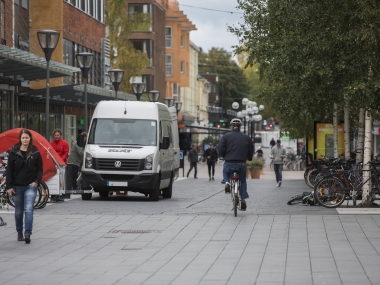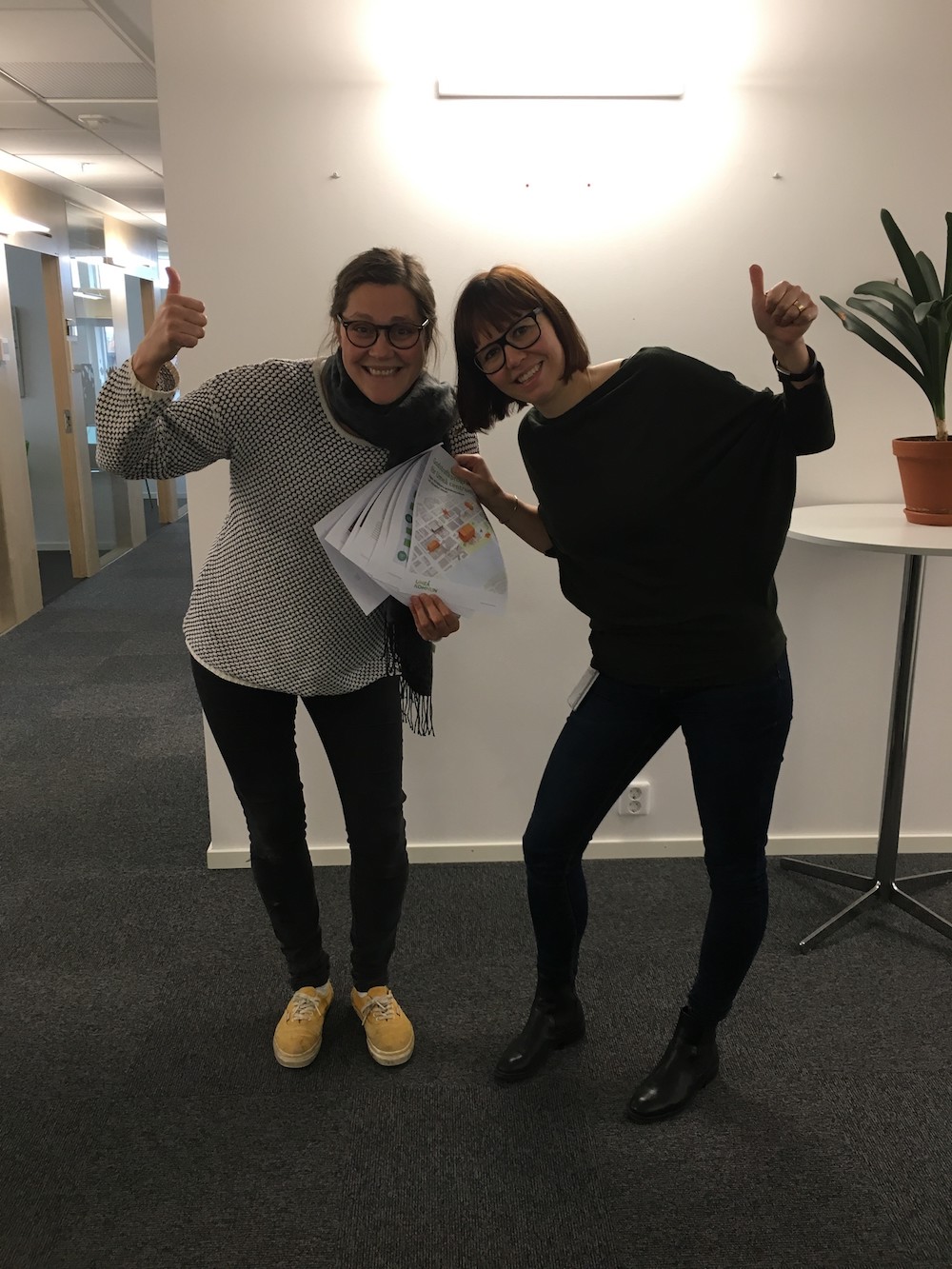A new urban freight plan
Edited on
24 June 2019When Umeå — northern Sweden’s largest urban community — joined the URBACT Freight TAILS network, its city centre faced increasing traffic problems, partly from vehicles delivering to shops and services. With a fast-growing population and e-commerce boom, Umeå needed to build a sustainable freight transport strategy to stay attractive.

“Umeå has problems with air quality in the city centre: That was the starting point for our work with freight, and the entrance to URBACT,” recalls Lina Samuelsson, Project Manager at the Umeå Municipality.
Working with nine Freight TAILS partner cities for over two years, the municipality built a clear, integrated plan: ‘Freight programme for Umeå city centre 2018-2025' which was granted full approval by the City Council.
“Today we have a programme which makes it easier to take the right decisions when it comes to freight in Umeå. And that’s for all of Umeå, all our inhabitants, people who come here to visit, people who are, or will be, working with freight...” says Ms Samuelsson
Demystifying local interests
Carriers, residents, government, suppliers, businesses, landlords, vehicle manufacturers... such complex interests had hindered planning for the future of freight in Umeå. No one owned the whole problem, making it tricky to understand, communicate and agree solutions.
After joining URBACT, the city set up a local group (URBACT Local Group) bringing relevant people together to identify main freight challenges, including: dangerous on-street loading and unloading; air and noise pollution; unregulated delivery traffic; and complex waste collection. The municipality produced a status report, forming a basis for the new freight programme, in line with the city’s development strategies.
and complex waste collection. The municipality produced a status report, forming a basis for the new freight programme, in line with the city’s development strategies.
“Our URBACT Local Group was a very important support giving us input and data when we developed the status report,” says Ms Samuelsson. “In future, they’ll be one of the most important partners for Umeå municipality to succeed in achieving the goals of the Freight Traffic Programme.”
“Umeå had expertise in thinking about the relationship between freight delivery and retail,” explains URBACT Lead Expert Philip Stein, “but no real knowledge on how to deal with it in the city context — they were unable to connect with the sectors, e.g. freight operators. In the end they were one of the most successful in getting the politicians on board."
Integrated freight plan launched
Umeå’s new Freight Programme has begun. Lisa Persson’s Traffic Planner, Streets and Parks department is preparing a ‘freight checklist’ for planning decisions, and a brochure for carriers. Soon, the city-centre loading bays will be monitored to help decide future locations.
Future actions include procurement requirements promoting quiet, energy-efficient municipality transport, and improvements for restricted zone deliveries, including physical design and pathways.
Reflecting the stakeholders’ diversity, this work involves municipal departments, from planning and procurement to environment and health protection — but also shop owners, carriers, the municipality’s waste and water company, and more.
The freight plan includes four realistic ‘indicators’, measuring: local opinions; delivery vehicles in selected streets; deaths and serious injuries by freight vehicles; and the proportion of heavy vehicles respecting environmental zone regulations. Though the URBACT network is finished, Umeå’s appetite for cross-sector, participatory projects looks set to last.
Inter-city learning
 URBACT tools included an ‘evil projections’ exercise, to identify potential pitfalls — and avoid them with help from transnational peers. Umeå’s were: “little interest in URBACT Local Group participation”; and “difficulty getting political leadership to understand the importance of working strategically with freight”. So they involved politicians from the start. The scheme received widespread support; and two city councillors attended the network’s final conference in Split (HR).
URBACT tools included an ‘evil projections’ exercise, to identify potential pitfalls — and avoid them with help from transnational peers. Umeå’s were: “little interest in URBACT Local Group participation”; and “difficulty getting political leadership to understand the importance of working strategically with freight”. So they involved politicians from the start. The scheme received widespread support; and two city councillors attended the network’s final conference in Split (HR).
“Our politicians are debating freight in the City Council — I can't remember the last time they did that. It’s great!” says Ms Samuelsson.
Of all the useful exchanges with Freight TAILS cities, Ms Samuelsson highlights Maastricht (NL): “We received much input from them regarding their work with behavioural change... we’ll use some of their ideas in future campaigns.”
“What the municipality’s work-model was missing, the URBACT method had. It was like completing the missing pieces in the puzzle,” says Ms Persson. “We haven't worked with an URBACT Local Group like this before. We have some similar approaches, but the URBACT method refined this and made it more successful.”
***
Umeå is also committed to improving gender equality. You can learn more about these actions and the URBACT #GenderEqualCities campaign by watching the video interview with Linda Gustafsson, Umea's Gender Equality Officer.
***
You can find the Cities in Action - Stories of Change publication just here.
 Submitted by URBACT on
Submitted by URBACT on




